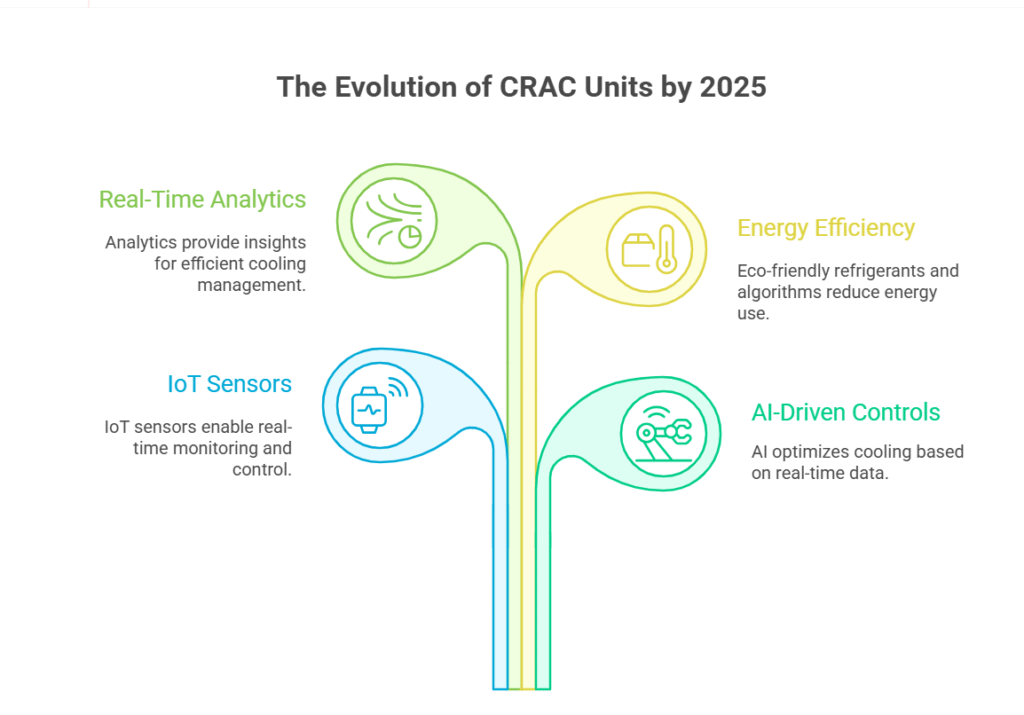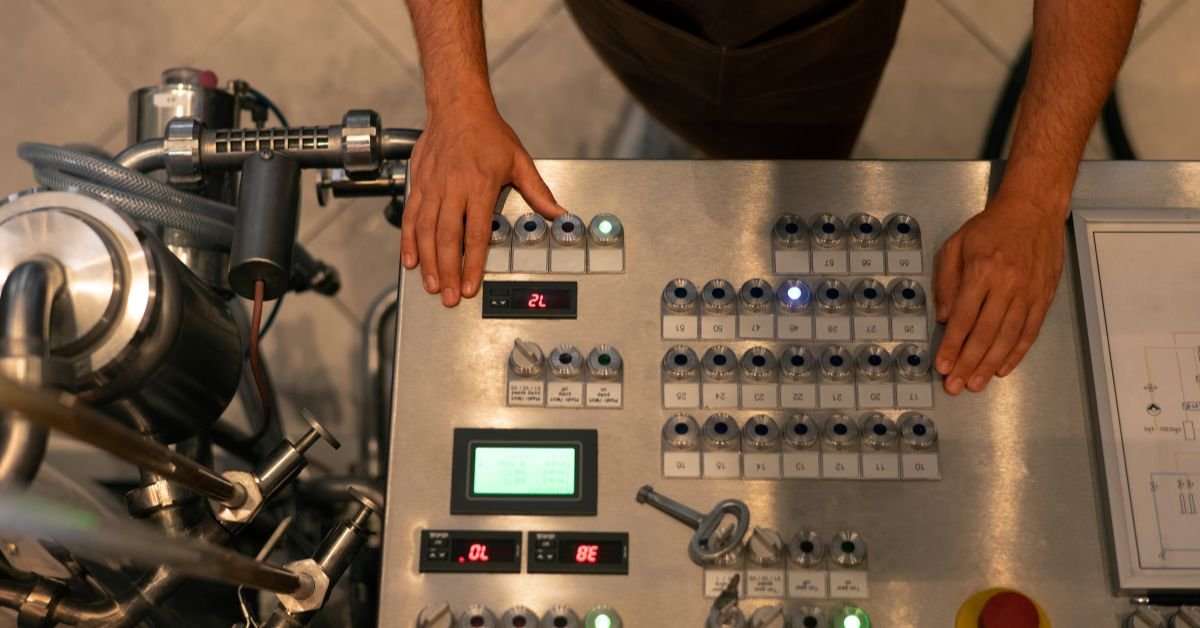CRAC unit short for Computer Room Air Conditioning unit—is a specialized air conditioning system designed to maintain the perfect environment for sensitive electronic equipment. Unlike your home air conditioner, a CRAC unit is all about precision. It’s engineered to control temperature, humidity, and airflow with pinpoint accuracy, ensuring that servers, switches, and storage devices stay within their safe operating range.
Why does this matter? Because even a slight deviation in temperature or humidity can spell disaster for mission-critical hardware. Overheating leads to downtime, data loss, and expensive repairs. That’s why companies like the Liebert Corporation have spent decades perfecting the art of Liebert HVAC systems, setting the gold standard for data center cooling.
The Evolution of CRAC Units: From Simple Cooling to Smart Precision
The Early Days: Basic Cooling
Back in the day, data centers relied on standard air conditioning units. But as server density increased, so did the heat load. Traditional systems just couldn’t keep up. Enter the CRAC unit—a game-changer that brought air conditioner precision to the world of IT.
The Rise of Liebert Units
The Liebert unit quickly became synonymous with reliability. These systems introduced features like hot aisle/cold aisle containment, variable speed fans, and advanced humidity control. Suddenly, data centers could scale up without worrying about overheating.
2025 and Beyond: Smart, Sustainable, and Connected
Fast forward to 2025, and CRAC units are smarter than ever. IoT sensors, AI-driven controls, and real-time analytics allow facilities managers to optimize cooling on the fly. Energy efficiency is now a top priority, with modern units using eco-friendly refrigerants and adaptive algorithms to minimize power consumption.

How Does a CRAC Unit Work? (A Simple Breakdown)
At its core, a CRAC unit operates much like a traditional air conditioner—but with a twist. Here’s a quick rundown:
- Air Intake: The unit draws in warm air from the data center.
- Cooling Coil: The air passes over a cooling coil filled with refrigerant, dropping its temperature.
- Humidity Control: Moisture is either added or removed to maintain optimal humidity levels.
- Air Distribution: The cooled, conditioned air is pushed back into the room, usually through raised floors or overhead ducts.
What sets a CRAC unit apart is its ability to maintain tight tolerances—often within 1°C and 5% relative humidity. That’s the kind of air conditioner precision you just can’t get from off-the-shelf systems.
Real-World Example: Keeping a Financial Data Center Online
Let’s look at a real-life scenario. In 2024, a major financial institution in New York faced a critical challenge: their legacy cooling system was struggling to keep up with a new high-density server deployment. Downtime wasn’t an option.
They turned to a modern Liebert unit with smart controls. Within days, the new CRAC unit was installed and integrated with their building management system. The result? Server temperatures dropped by 8°C, energy costs fell by 15%, and—most importantly—there were zero unplanned outages.
A facility manager tweeted:
“Upgraded to a Liebert CRAC unit last month. Not only is our server room cooler, but our energy bill is down. Wish we’d done this sooner!”
Why Choose a Liebert Unit? (Features That Matter in 2025)
The Liebert Corporation has been at the forefront of CRAC technology for decades. Here’s why their units are still the go-to choice for mission-critical environments:
Unmatched Reliability
Liebert units are built to run 24/7, 365 days a year. Redundant components and self-diagnostics mean fewer failures and faster repairs.
Smart Controls
Modern Liebert HVAC systems use AI and machine learning to predict cooling needs, adjust fan speeds, and optimize energy use in real time.
Eco-Friendly Operation
With a focus on sustainability, Liebert units now use low-GWP refrigerants and energy-efficient compressors, helping data centers meet strict environmental standards.
Scalability
Whether you’re cooling a small server closet or a hyperscale data center, there’s a Liebert unit that fits your needs. Modular designs make it easy to expand as your business grows.
CRAC Unit vs. Traditional Air Conditioning: What’s the Difference?
It’s a common question: Can’t I just use a regular air conditioner for my server room? Here’s why that’s a risky move:
| Feature | CRAC Unit | Traditional AC |
|---|---|---|
| Temperature Precision | ±1°C | ±3–5°C |
| Humidity Control | Yes | Limited |
| 24/7 Operation | Designed for it | Not recommended |
| Redundancy | Built-in | Rare |
| Integration | BMS/IT systems | Basic thermostats |
| Service Life | 10–15 years | 5–8 years |
In short, if you care about uptime, a CRAC unit is the only way to go.
The Risks of Skimping on Precision Cooling
Cutting corners on cooling can have serious consequences. Here’s what’s at stake:
- Hardware Failure: Overheating shortens the lifespan of servers and storage devices.
- Data Loss: Sudden shutdowns can corrupt critical data.
- Downtime: Every minute offline costs money and damages your reputation.
- Compliance Issues: Many industries require strict environmental controls for data storage.
Investing in a quality CRAC unit isn’t just smart—it’s essential.
Key Features to Look for in a 2025 CRAC Unit
Shopping for a new CRAC unit? Here’s what to prioritize:
Advanced Monitoring
Look for units with built-in sensors and remote monitoring capabilities. Real-time alerts can prevent small issues from becoming big problems.
Energy Efficiency
Modern CRAC units use variable speed drives, EC fans, and adaptive controls to minimize energy use without sacrificing performance.
Modular Design
As your data center grows, your cooling system should scale with you. Modular CRAC units make upgrades painless.
Integration with BMS
Seamless integration with your building management system (BMS) allows for centralized control and smarter automation.
Low Maintenance
Choose units with self-cleaning coils, easy-access filters, and predictive maintenance features to reduce downtime.
CRAC Unit Installation: What to Expect
Installing a CRAC unit isn’t a DIY project. Here’s a quick overview of the process:
- Site Assessment: A cooling specialist evaluates your space, heat load, and airflow patterns.
- System Design: The right size and configuration are selected based on your needs.
- Installation: Professional technicians handle the setup, including electrical and refrigerant connections.
- Testing & Commissioning: The system is tested under real-world conditions to ensure optimal performance.
- Ongoing Support: Regular maintenance keeps your CRAC unit running smoothly for years to come.
Pros and Cons of CRAC Units in 2025
Pros
- Precision Cooling: Maintains tight temperature and humidity tolerances.
- Reliability: Designed for continuous operation.
- Energy Savings: Modern units are more efficient than ever.
- Scalability: Modular options fit any size facility.
- Smart Features: AI-driven controls and remote monitoring.
Cons
- Upfront Cost: Higher initial investment than standard AC.
- Complexity: Requires professional installation and maintenance.
- Space Requirements: Larger footprint than some alternatives.
CRAC Units and Sustainability: Meeting 2025’s Green Standards
Sustainability is no longer optional. Data centers are under pressure to reduce their carbon footprint, and CRAC units are stepping up. Here’s how:
- Low-GWP Refrigerants: New units use refrigerants with minimal global warming potential.
- Energy-Efficient Components: EC fans, variable speed compressors, and advanced controls slash power consumption.
- Heat Recovery: Some systems capture waste heat for reuse elsewhere in the facility.
By choosing a modern CRAC unit, you’re not just protecting your hardware—you’re helping the planet.
CRAC Unit Maintenance: Tips for Longevity
Want your CRAC unit to last? Follow these best practices:
- Regular Filter Changes: Dirty filters reduce efficiency and strain the system.
- Coil Cleaning: Keep coils free of dust and debris for optimal heat transfer.
- Check Refrigerant Levels: Low refrigerant can lead to poor cooling and compressor damage.
- Monitor Alarms: Don’t ignore warning lights or error codes—address issues promptly.
- Schedule Professional Inspections: Annual checkups catch problems before they escalate.
The Future of CRAC Units: What’s Next?
Looking ahead, expect even more innovation in the world of precision cooling:
- AI-Driven Optimization: Self-learning systems that adapt to changing loads in real time.
- Edge Data Center Solutions: Compact CRAC units for remote and distributed sites.
- Integration with Renewable Energy: Smarter controls that sync with solar and wind power.
- Predictive Maintenance: AI that spots issues before they cause downtime.
The bottom line? CRAC units are only getting smarter, greener, and more essential.
FAQs
Q. What is the difference between a CRAC unit and a Liebert unit?
A. CRAC unit is a general term for any computer room air conditioning system. A Liebert unit refers specifically to CRAC units manufactured by the Liebert Corporation, known for their reliability and advanced features.
Q. How does a Liebert HVAC system improve data center efficiency?
A. Liebert HVAC systems use smart controls, variable speed fans, and energy-efficient components to deliver precise cooling while minimizing power consumption. This leads to lower energy bills and a smaller carbon footprint
Q. Can I use a regular air conditioner instead of a CRAC unit for my server room?
A. While it’s possible, it’s not recommended. Regular air conditioners lack the air conditioner precision and 24/7 reliability needed for critical IT environments. A CRAC unit is purpose-built for the job.
Q. How often should a CRAC unit be serviced?
A. Most manufacturers recommend professional maintenance at least once a year, with regular filter changes and system checks every few months. This ensures optimal performance and extends the life of your unit.
Ready to Upgrade Your Data Center Cooling?
If you’re serious about uptime, efficiency, and peace of mind, investing in a modern CRAC unit is a no-brainer. Whether you’re running a small server room or a massive data center, the right cooling system makes all the difference.
CLICK HERE FOR MORE BLOG POSTS
John Authers is a seasoned and respected writer whose work reflects the tone, clarity, and emotional intelligence that readers value in 2025. His writing blends deep insight with a natural, human voice—making complex ideas feel relatable and engaging. Every piece he crafts feels thoughtful, original, and genuinely worth reading.

